Submitted by WA Contents
Natalie Dionne Architecture built wooden house raised on colums on a rocky landscape in Canada
Canada Architecture News - Nov 25, 2020 - 15:22 11124 views
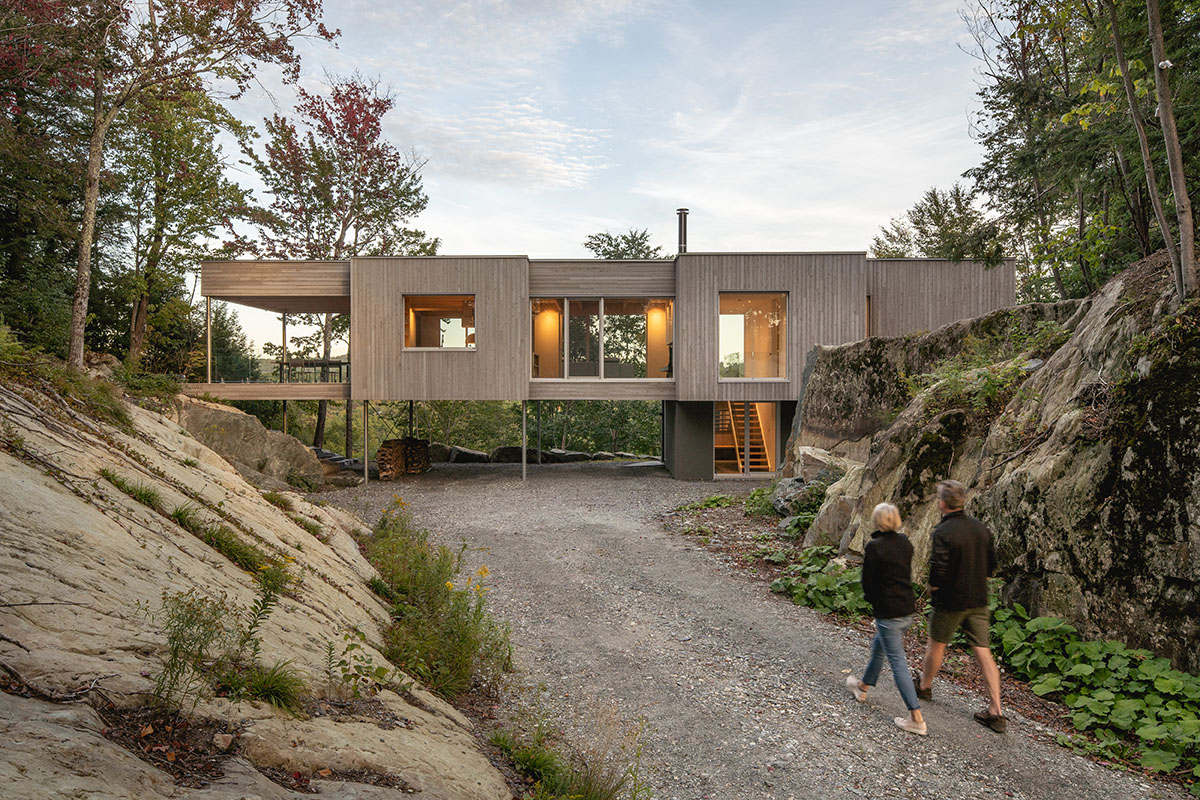
Montréal-based architecture practice Natalie Dionne Architecture has designed a wooden house that is raised on slender columns to provide views towards the forest and have a minimum impact on nature.
Called Forest House I, the 2,300-square-foot (215-square-metre house) is located in the Eastern Townships, is roughly 100 kilometers southeast of Montreal, Canada.
Greatly valued by city dwellers for its natural beauty and relative proximity to urban life, the area has now become a choice spot for those willing and able to work from home.
The house was designed for the clients, who are a professional couple, and they had long cherished the dream of building themselves a home in the heart of nature.
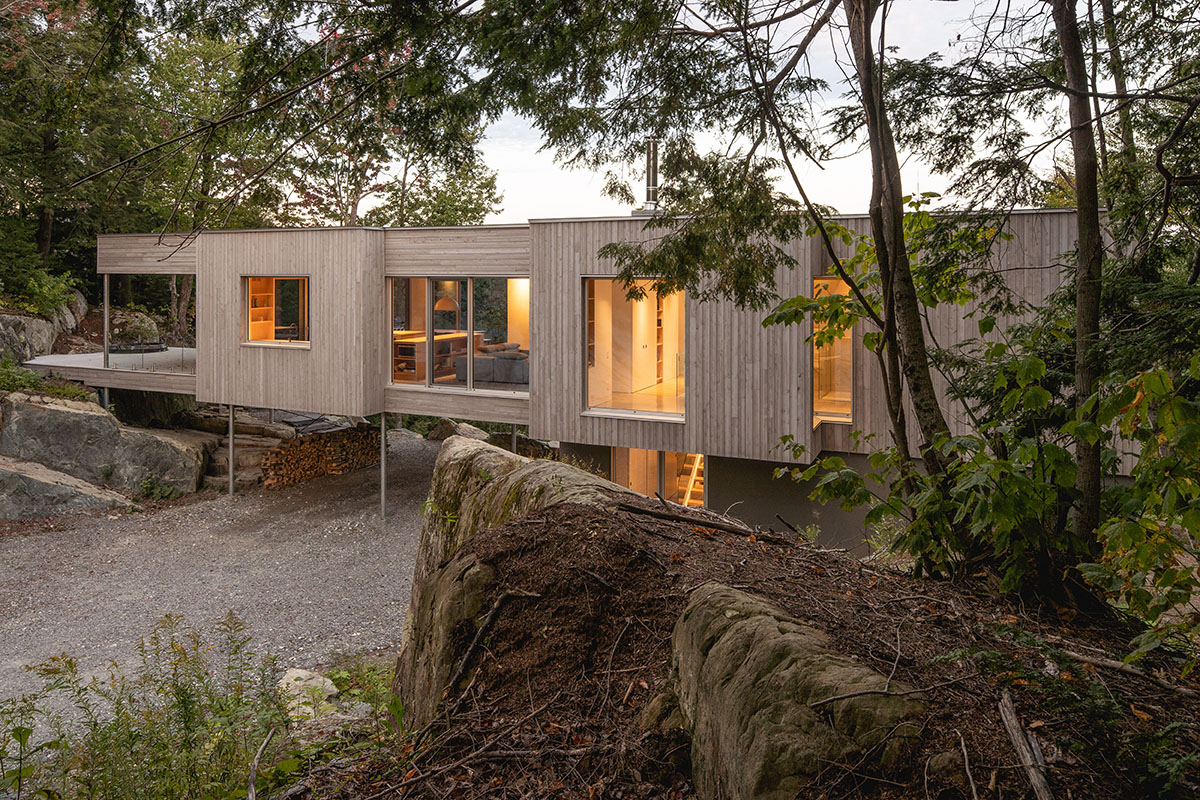
"Discreetly inserted onto an outcrop of the Canadian shield, surrounded by mature hemlock and deciduous trees, the home is meant to pay tribute to the living forest," said Natalie Dionne Architecture.
"Wood dominates a restrained palette of materials, both inside and outside."
"The prematurely aged plank cladding, exposed framework, and various other interior finishes showcase all the richness of the natural material."

Strategic implantation
A natural cleft in the existing topography, suboptimal orientation, and the presence of numerous rocky outcrops presented a major challenge for both clients and architects.
During a careful and thorough ‘walking of the site,’ a particularly impractical rock formation near a precipice caught their eye and provided inspiration and insight as to how to place the home.

Standing on top of the 3m tall rock, all parties agreed that, in order to get the most out of available light and views, the living quarters, set parallel to the ridge, had to be jacked up to this level and reach out across and over the bowl in order to make a soft landing on the rocky outcrop to the north where the best light was to be found.
An elevated structure, on a minimalist footprint, prioritizing a low impact intervention to the existing terrain, was also understood to have the added benefit of creating a dramatic approach to the home by emphasizing, and assuring the persistence of, the magnificent vista that lay beyond the precipice.
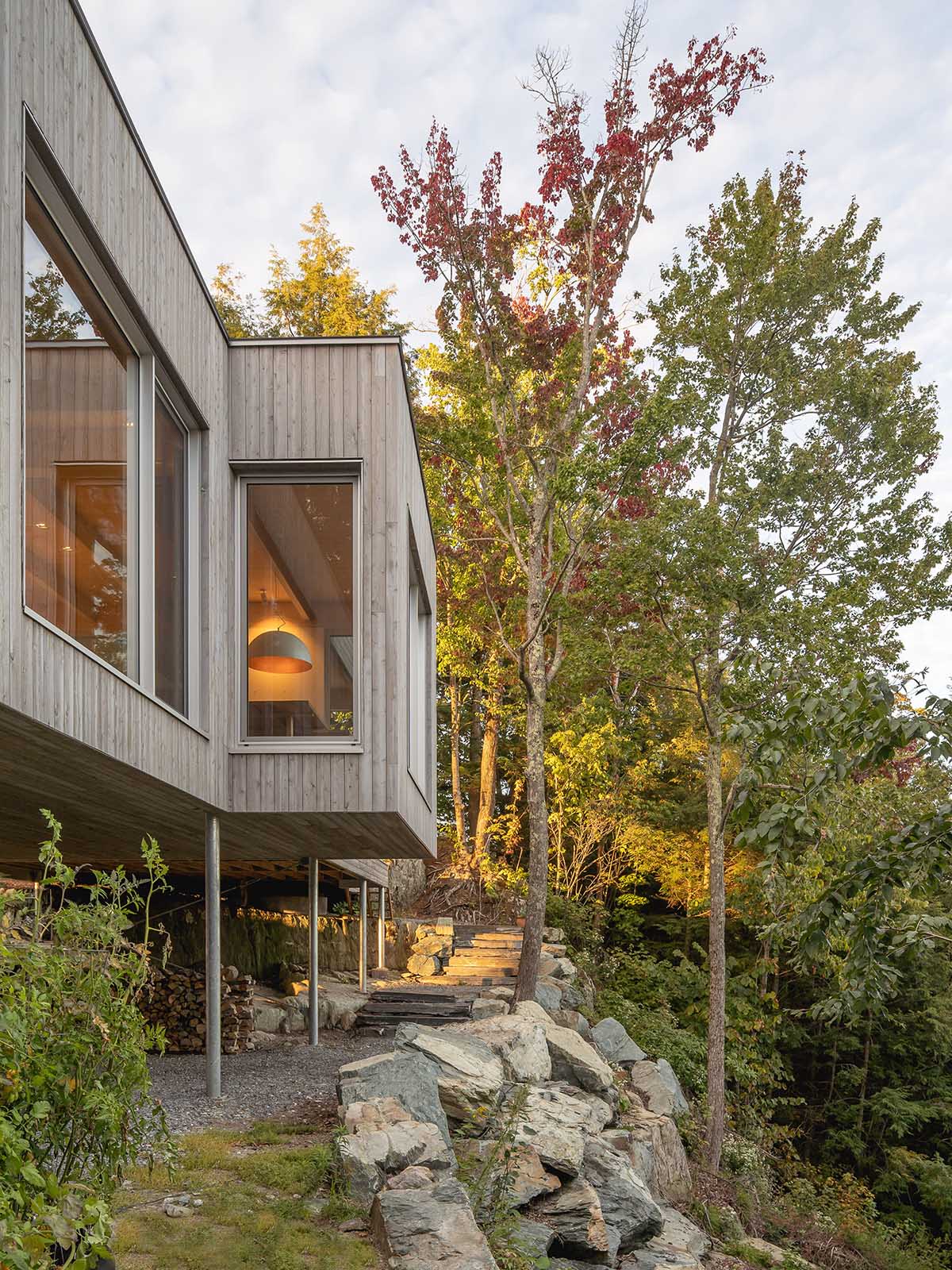
The architectural program
The main floor, the heart of the project (anchored at one end, atop a base where a lonely rock once stood) hovers over the rocky cleft and projects a vast, outdoor, partially covered terrace towards a moss-covered escarpment to the north.
From this exterior perch, dedicated to relaxation and outdoor living with its embedded spa and leisure furniture, one passes to the fluid interior spaces of the kitchen, dining room, living room, and the couple's bedroom suite at the southern end of this linear building.
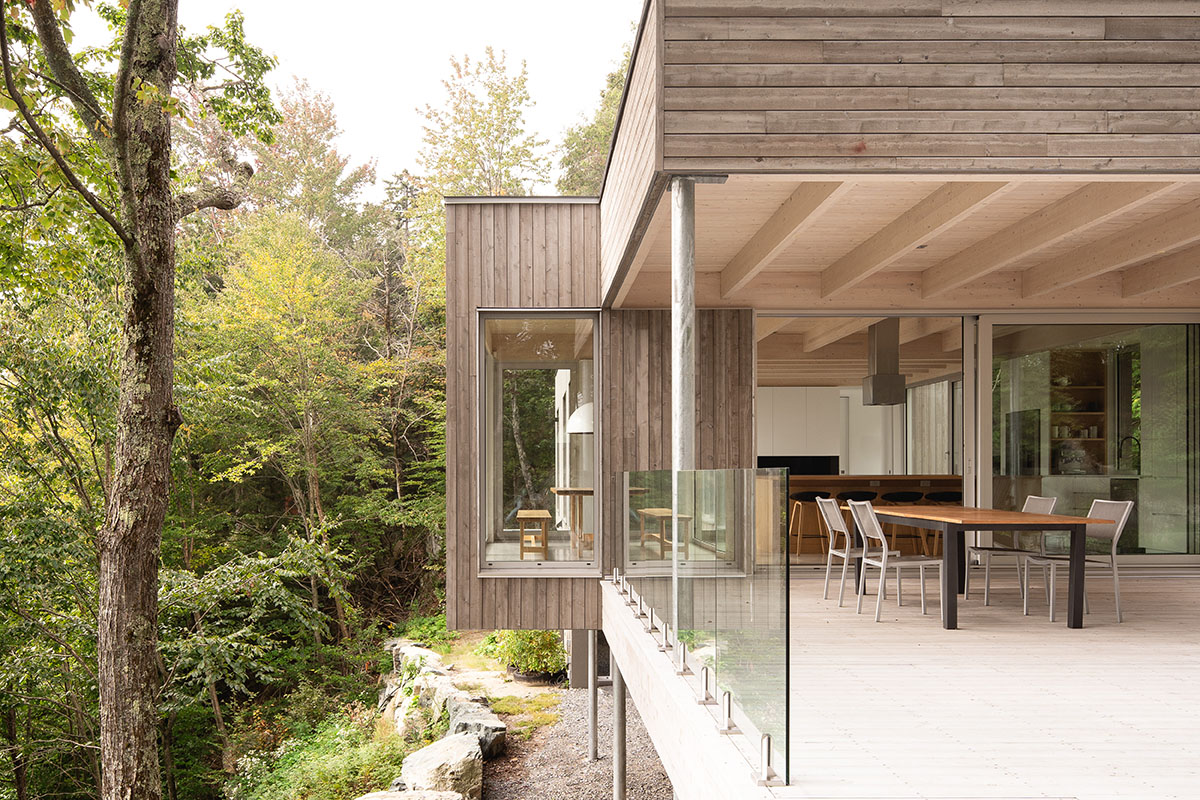
The staircase and foyer, which communicates with the home’s main entrance hall at ground level, are inserted between the living room and the bedroom. Adjacent to the entrance hall, there is a bunkroom, capable of accommodating up to 10 guests.
The sitting area, glazed floor to ceiling on both sides, is bathed in natural light. To the east, a dramatic incline exposes a spectacular view of the forest canopy. Several alcoves, projecting out from the façades, grant extra space to the kitchen, dining area, and master bathroom and provide additional views and sunlight to penetrate from the south.
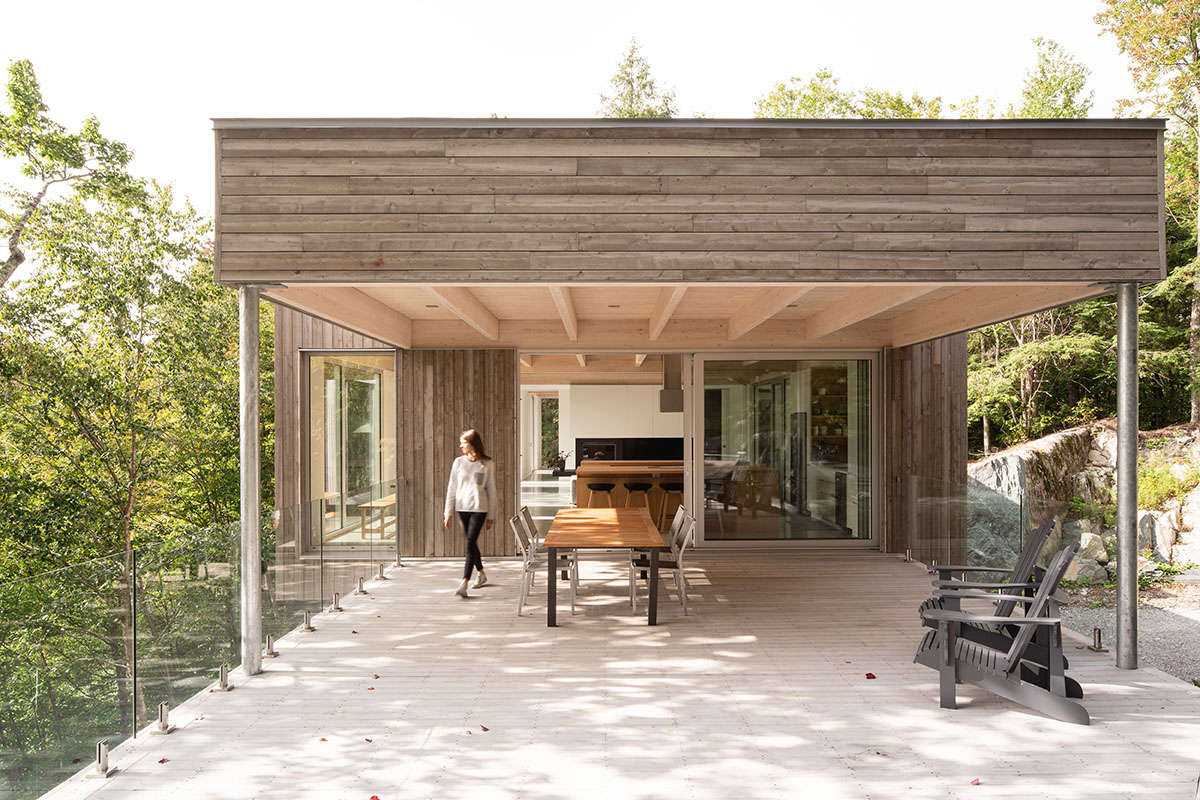
The master suite, the only private space on the main level, features full-height windows as well. One of these was placed along the main circulation axis, directly in front of an outcrop.
The effect is one of total transparency from one end of the house to the other. On the west side, the carefully designed bathroom features a perfect spot for contemplation with its bathtub inserted in a glassed-in corner alcove.
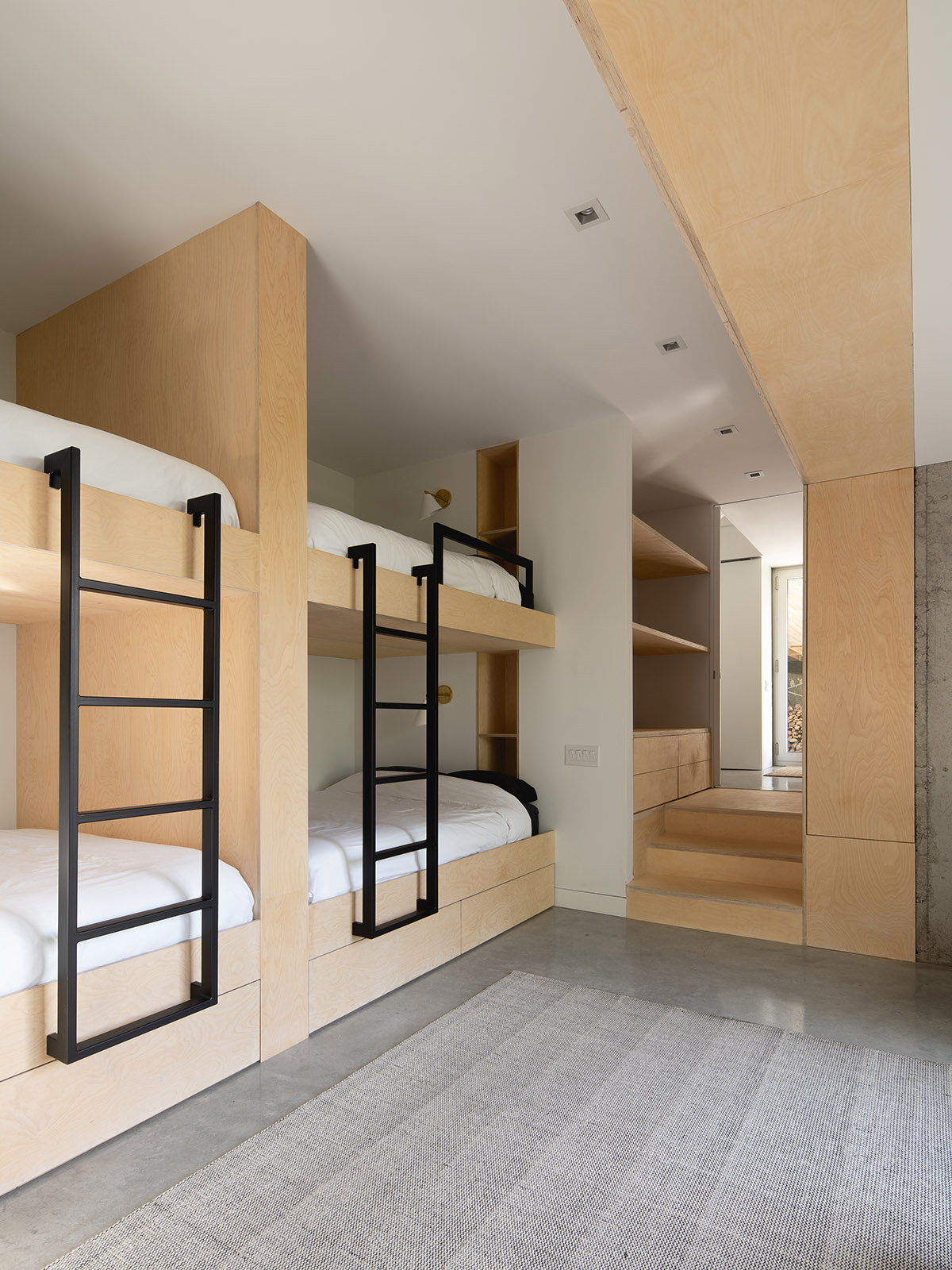
Materials and color palette
Wood is everywhere present in this 215 sq m home, which strives towards symbiosis with the surrounding environment. The exposed roof structure is made of engineered wood produced from Northern Québec black spruce.
Particular attention was paid to the design and detailing of these structural elements supporting the roof’s regular grid. The façades, clad in eastern white cedar, were pretreated with a product accelerating the greying process, so as to blend into the landscape like a chameleon sunning itself on a rock, and to keep future maintenance to a minimum.

Solid maple was used for the kitchen islands, the vanities the stairs, and the catwalk whereas Russian plywood was used throughout for the rest of the built-in cabinetry. The bright palette chosen by the architects for the interiors contrasts sharply with the, at times, dark forest around the house.
Polished concrete floors, gypsum walls, and the natural aluminum windows blend harmoniously with the wood and help brighten the abundant natural light.
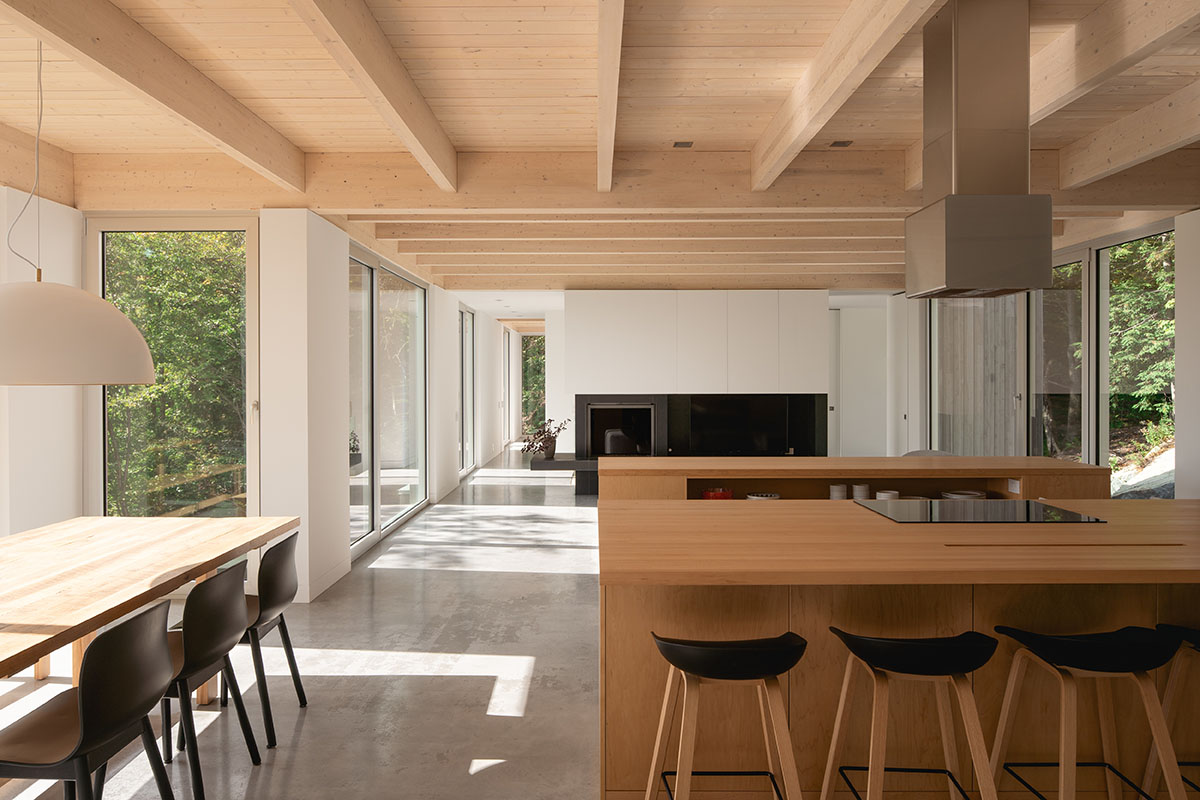
Below deck, the foundation was insulated from without in order to preserve the rough concrete within, a reminder of the rock that now shores up the edge of the precipice.
The exposed concrete blends in perfectly with the outcrops of stone seen just beyond the windows. Such is the nature of shelter and place.

"Born of a client’s desire to reconnect with the natural environment, Forest House I, attempts to distill the essence of a place by folding the landscape into every nook and cranny of the home," added the studio.
"It is the first in a series of similarly themed homes presently being developed by the team at Natalie Dionne Architecture. The Forest Home series reflect the architect’s growing desire to promote the ecological use of renewable materials."


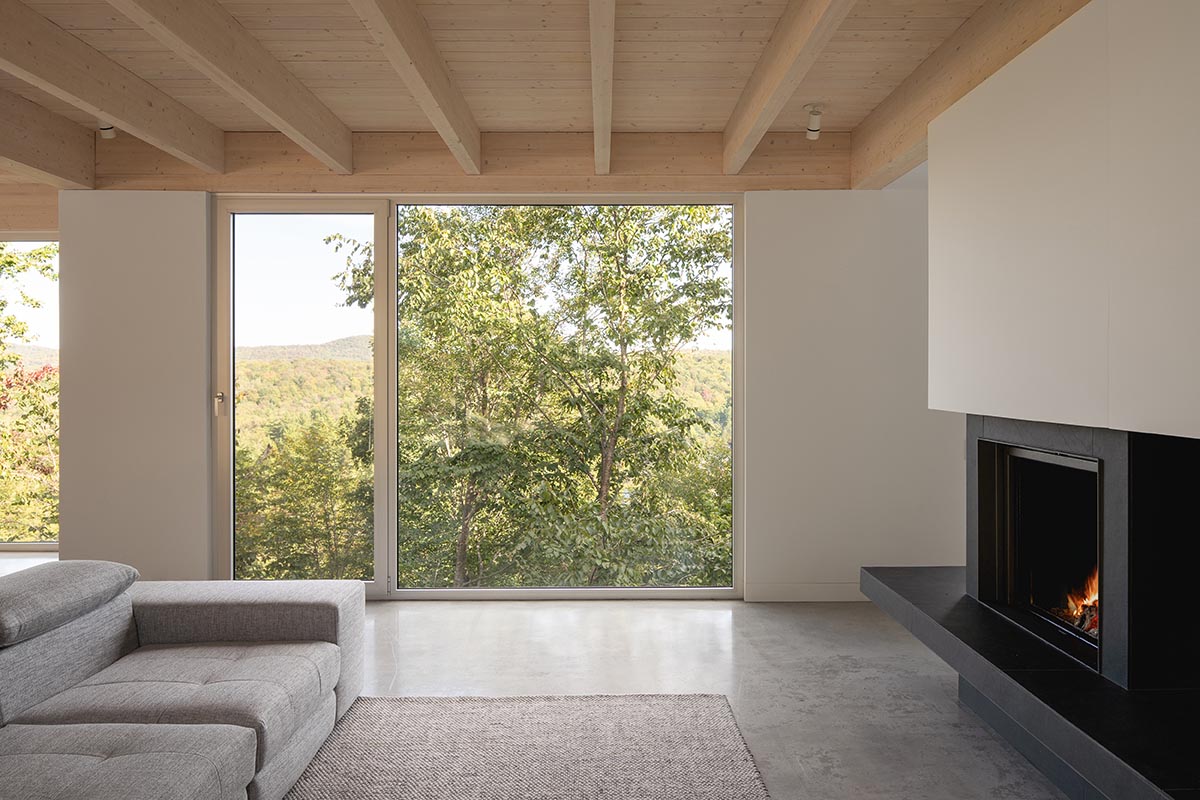


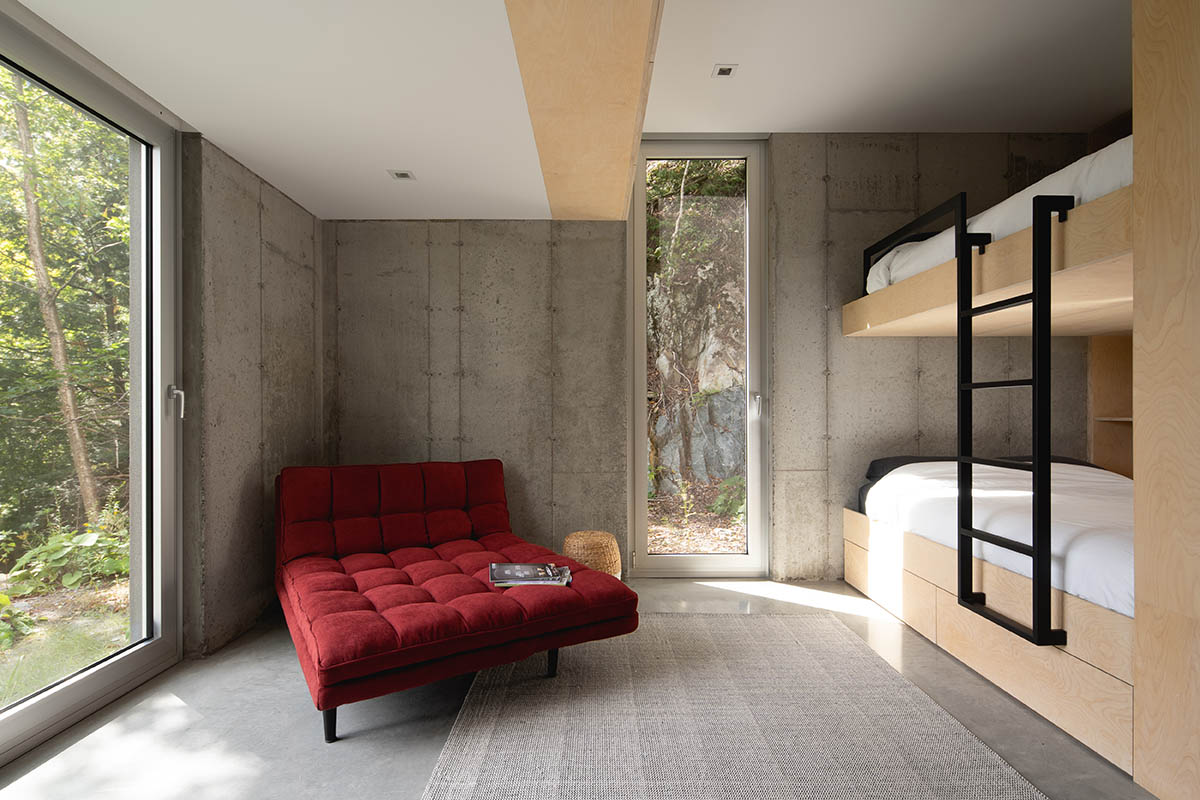
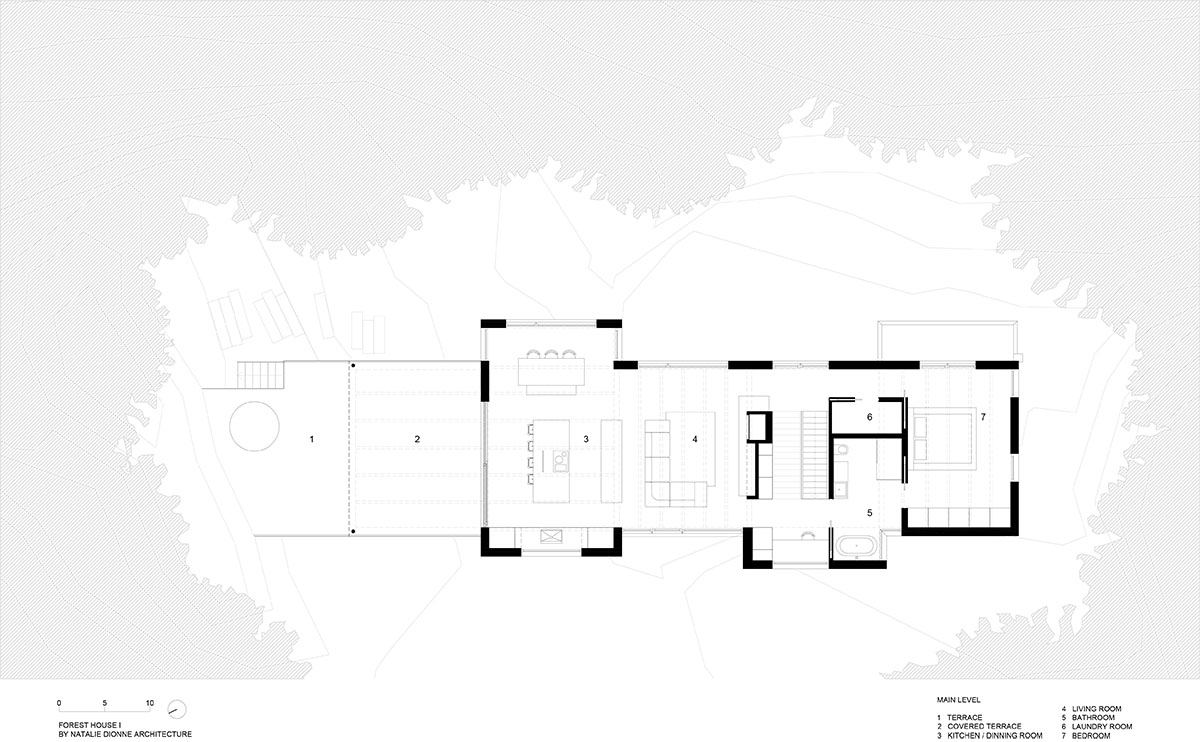
Main level plan
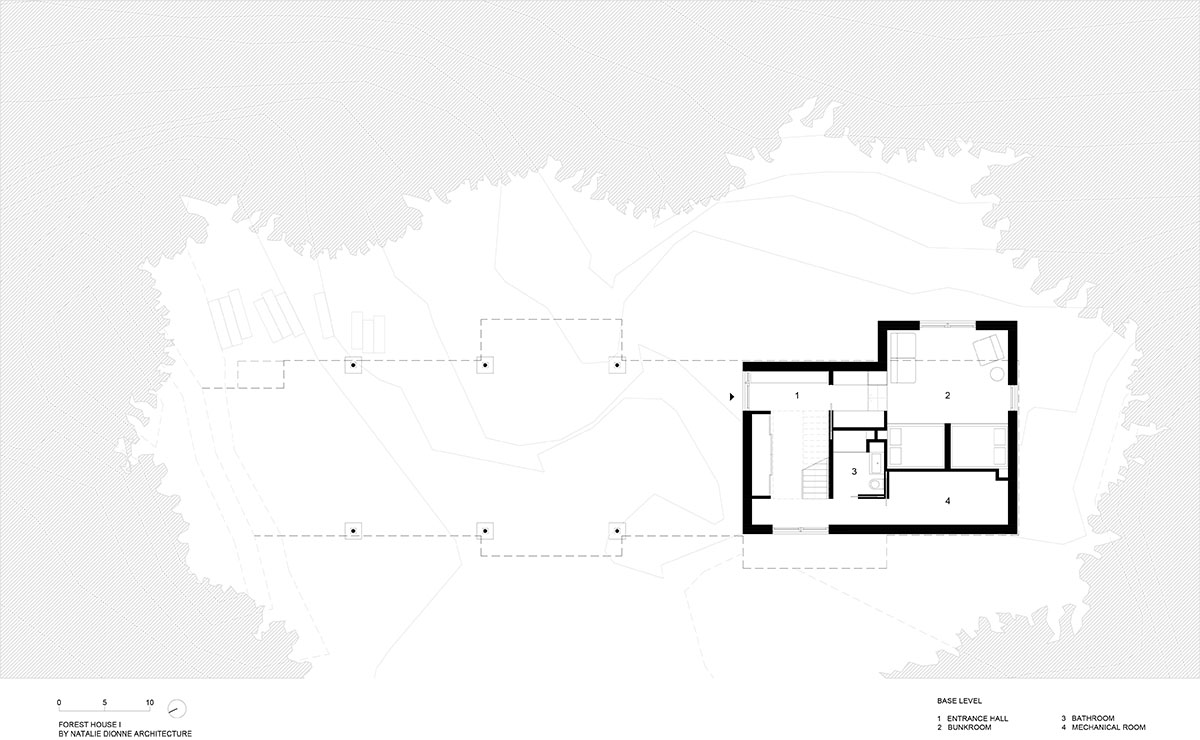
Base level plan
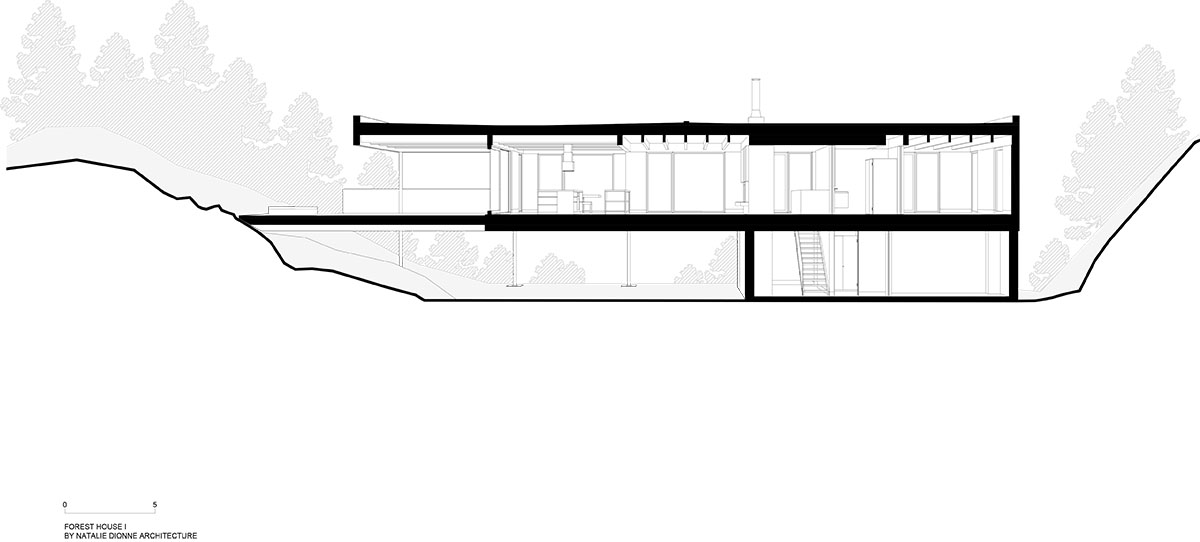
Longitudinal section
Project facts
Name of the project: Forest House I
Location: Bolton-Est, Eastern Townships, QC, Canada
Area of the project: House 2300sq.ft. (215sq.m.) / Terraces 650sq.ft. (60sq.m.)
Project end date: Fall 2020
Architects: Natalie Dionne Architecture
Design team: Natalie Dionne, Corinne Deleers, Rosemarie Faille-Faubert, and Martin Laneuville
Clients: Martine Bleau and Louis Barrière
Engineer: Latéral
All images © Raphaël Thibodeau
All drawings © Natalie Dionne Architecture
